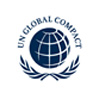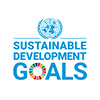Air emissions
Our industrial operations produce various types of air emissions such as sulphur dioxide (SO₂), nitrogen oxide (NOx) and dust, which we manage in accordance with our environmental regulatory approvals and permit discharge limits.
We require our industrial operations to comply with regulatory air quality limits and approvals, which we assess through routine monitoring and trend analysis. By working to manage these emissions, we aim to minimise their impact on local communities and the environment.
Our approach
We monitor all material air emissions from our industrial activities and look for ways to reduce emissions. These include ‘stack’ emissions, and fugitive emissions.
We operate according to relevant regulatory limits for air emissions. Where these are less stringent than our own internal standards, we apply our higher standards.
Types of air emissions we manage
Our metallurgical smelters emit sulphur dioxide (SO2), dust and nitrogen oxide (NOx) as both stack and fugitive emissions, under permit conditions developed through the regulatory approvals process.
Stack emissions
Stack emissions emanate consistently from a fixed source, such as a smelter furnace, and are measurable.
There are many control options for stack emissions, including mitigation during production processes, and capturing and treating off-gases prior to emission through technologies such as electrostatic precipitators, scrubbers or sulphuric acid plants.
Fugitive emissions
Fugitive emissions emanate irregularly from many diffuse sources.
Controlling and managing fugitive dust emissions (also referred to as ‘particulate matter’ or ‘PM’) is a main environmental management focus area for our mining assets. These emissions can occur during the blasting, excavating, moving, and crushing of ore rock, or the removal of topsoil, overburden, or waste rock, especially in environments that are more arid.
Stationary filter equipment technologies are not effective for fugitive emissions, so other controls are utilised, such as dust suppression, construction of berms to minimise dust travelling to communities, optimising our blasting activities, watering our haul roads and using protective coatings on product and waste storage facilities.
Our industrial assets also undertake progressive rehabilitation measures once active operations have been completed as part of our efforts to reduce or eliminate dust-related impacts on our local communities.
Principles we follow
-
 UN Global CompactVisit the website
UN Global CompactVisit the website -
 Principle 7Read more
Principle 7Read morebusinesses should support a precautionary approach to environmental challenges
-

-
 Principle 9Read more
Principle 9Read moreencourage the development and diffusion of environmentally friendly technologies
-
ICMMVisit the website
-

-
 UN SD GoalsVisit the website
UN SD GoalsVisit the website -


